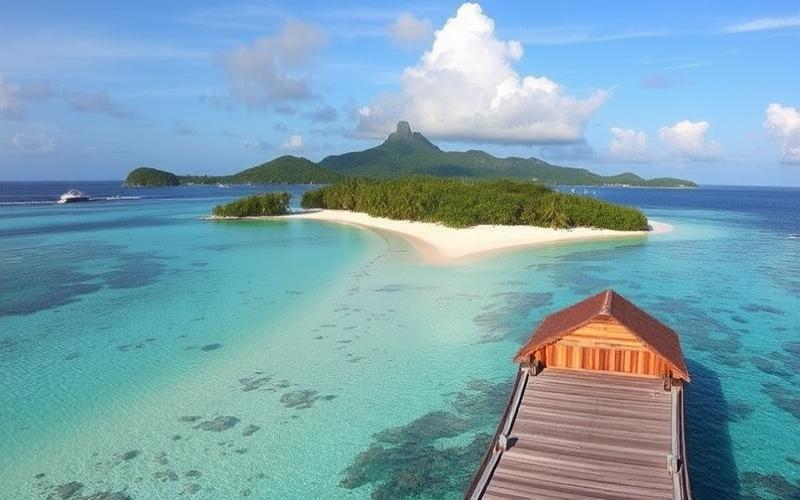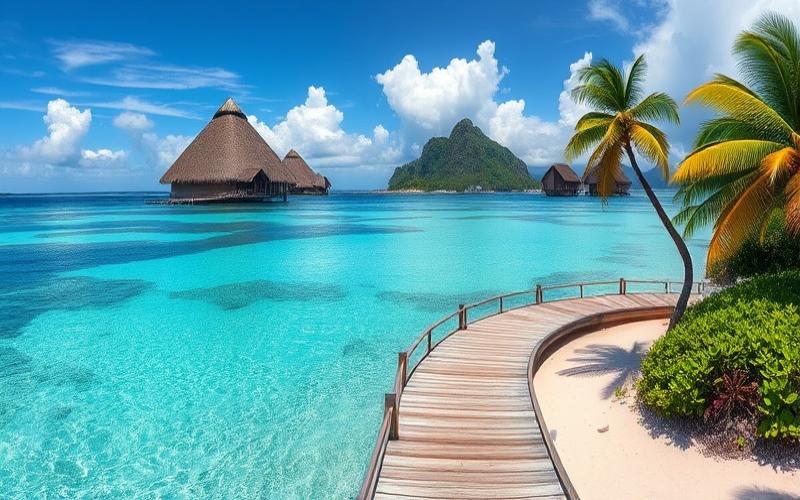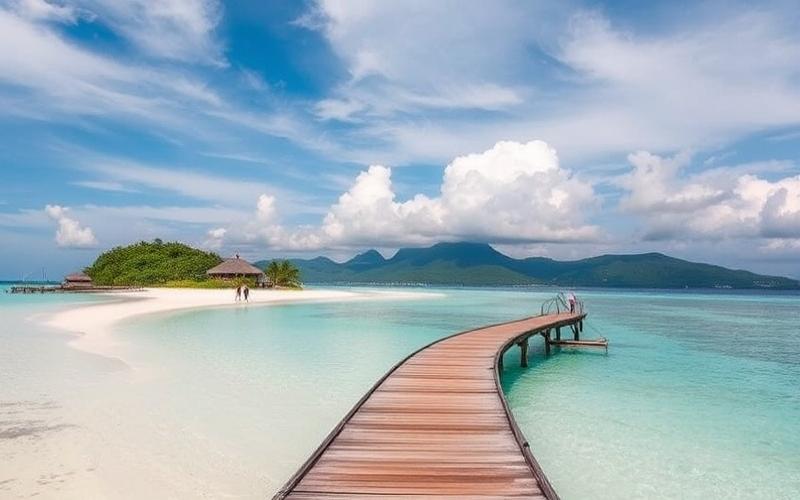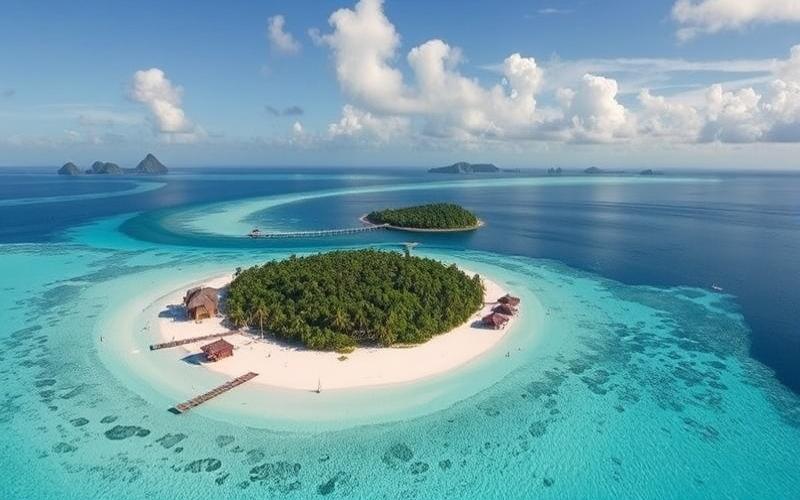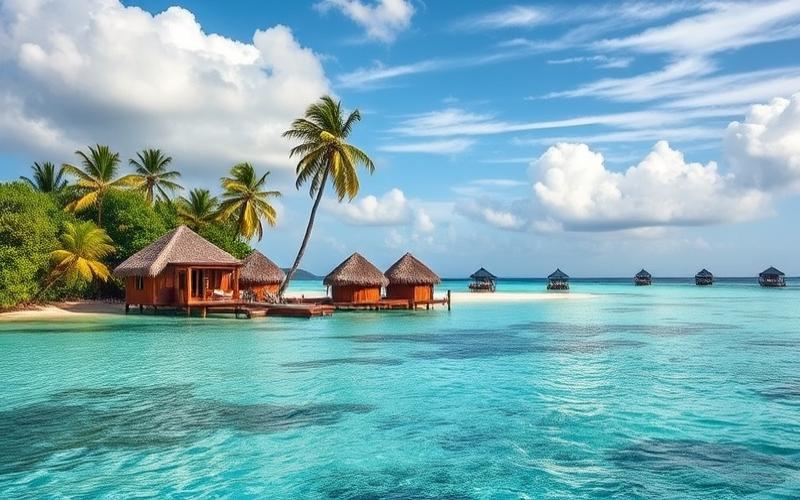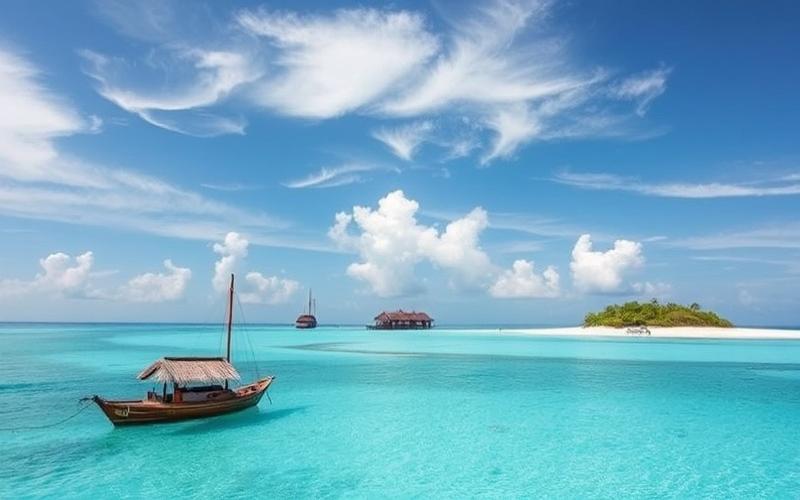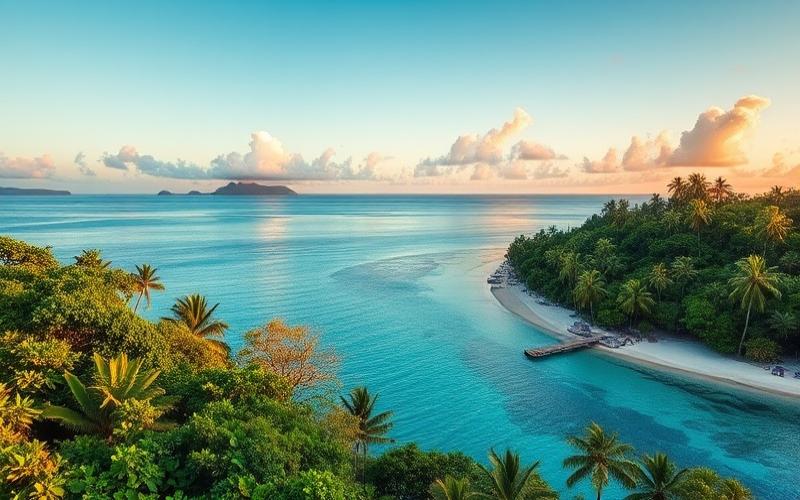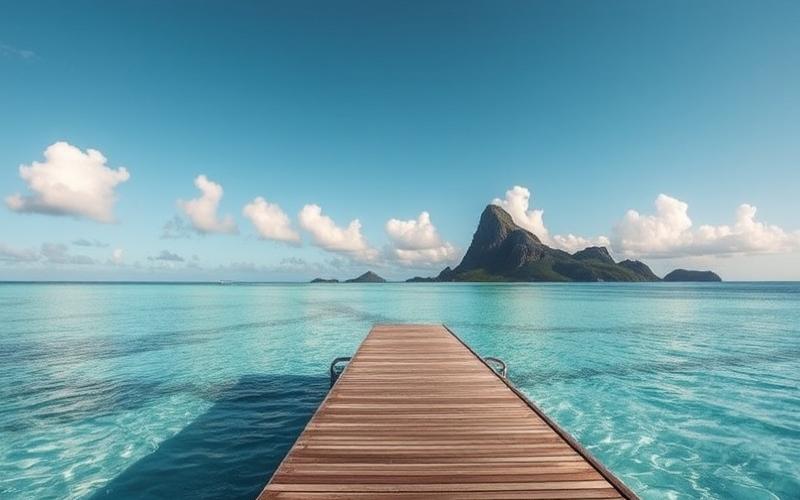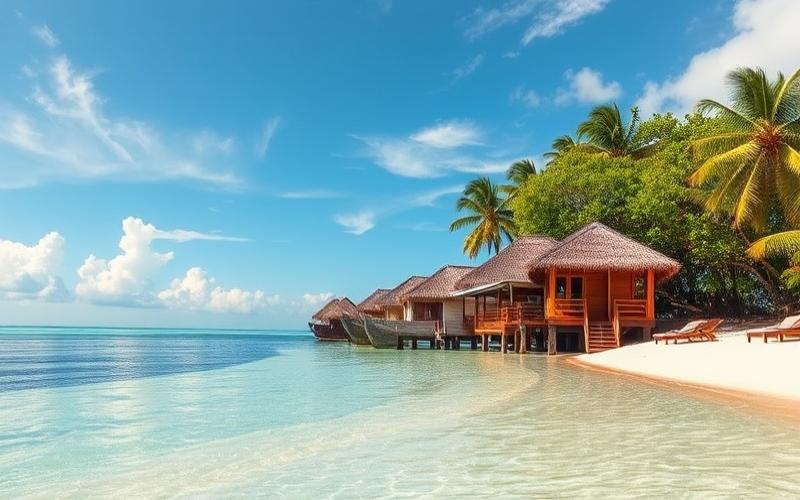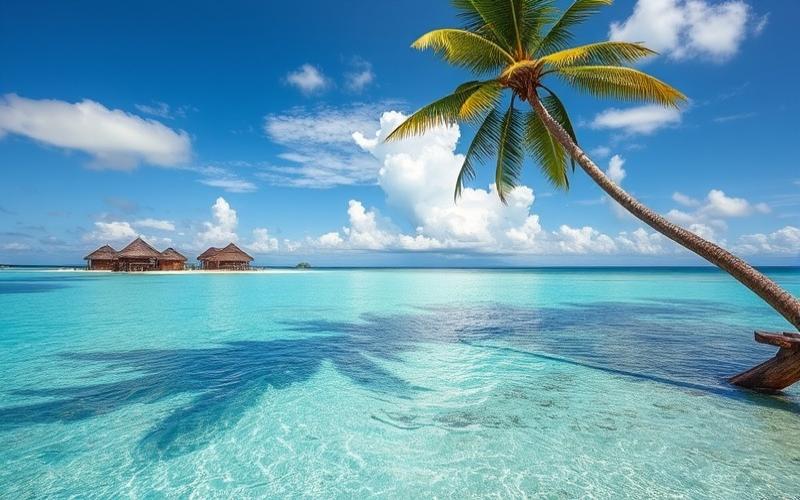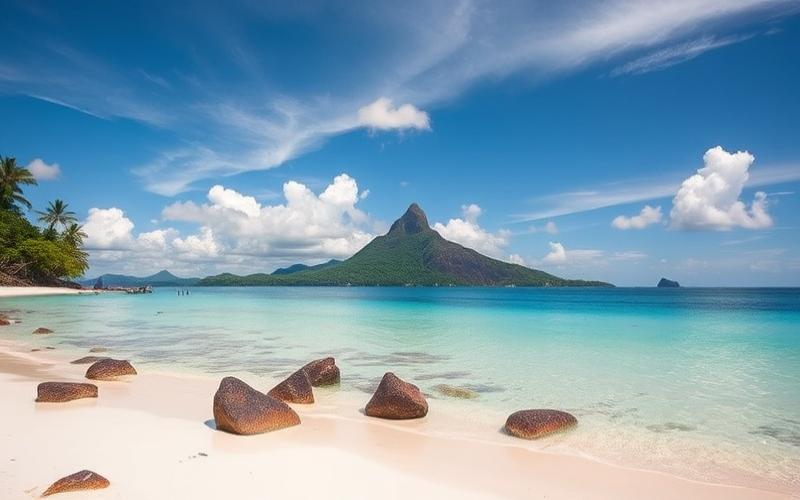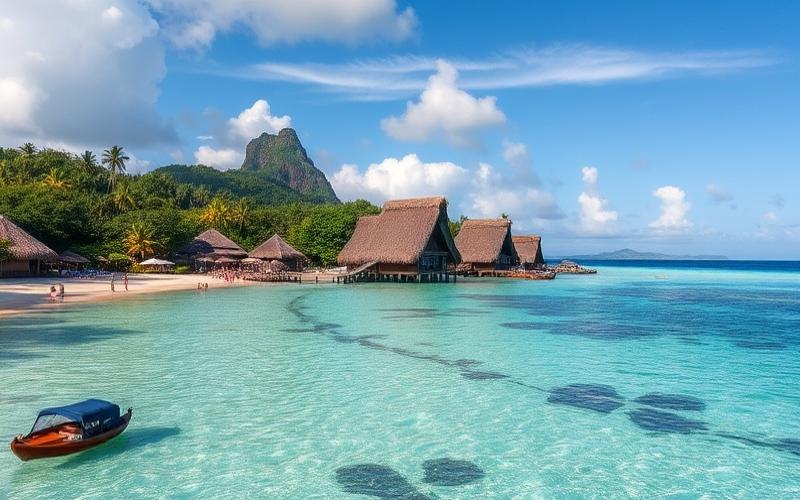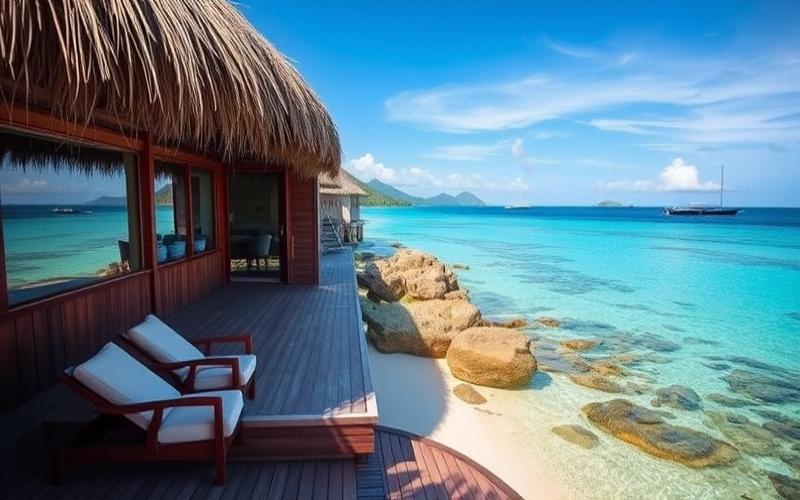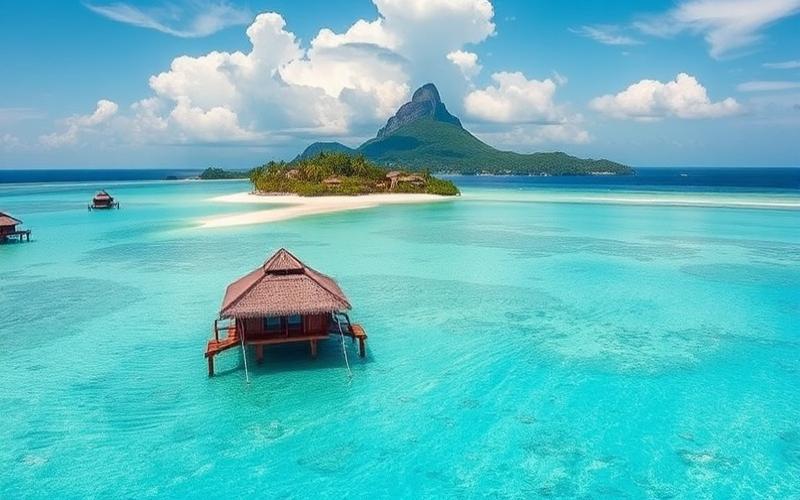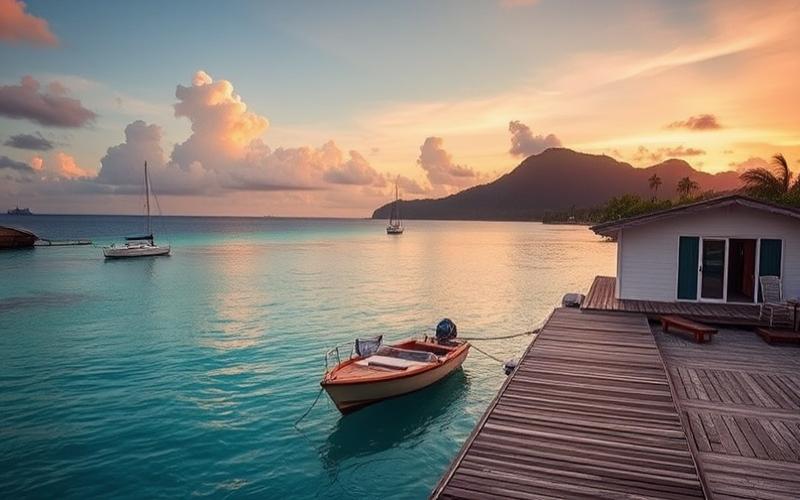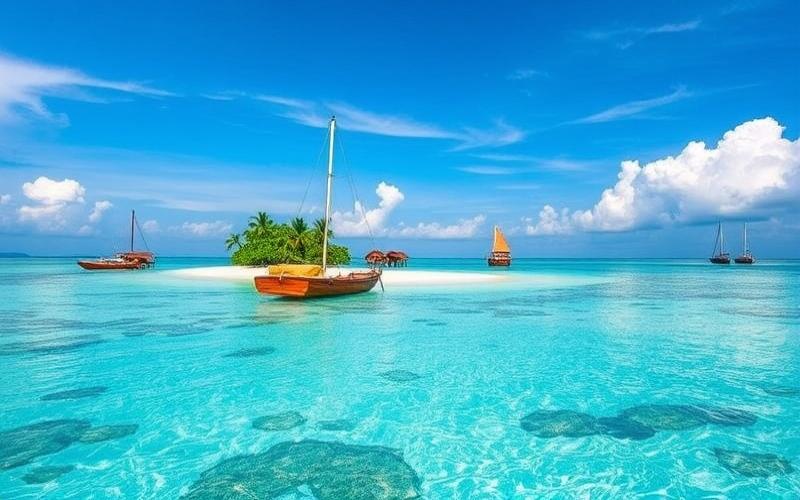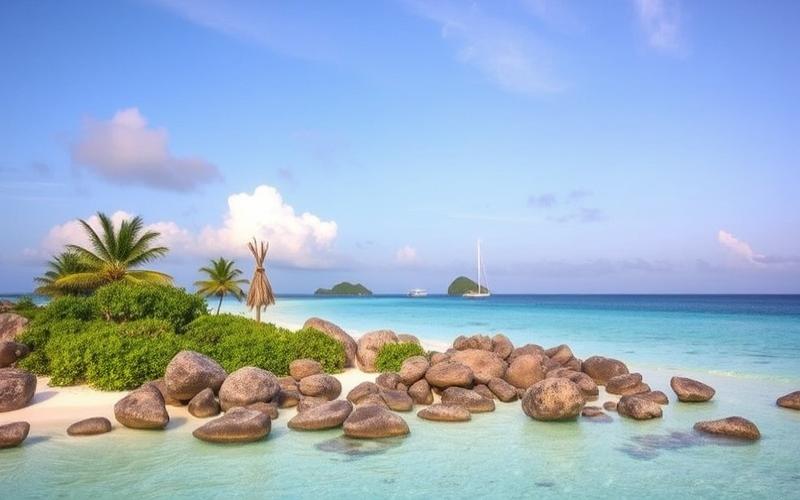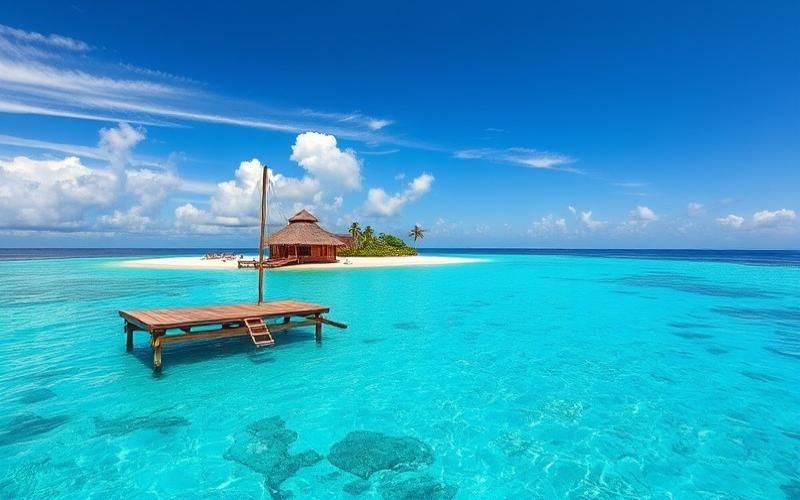
 Published on and written by Cyril Jarnias
Published on and written by Cyril Jarnias
The history of Seychelles, this paradisiacal archipelago in the Indian Ocean, is as rich as it is captivating. From the first explorers to the struggles for independence, through colonization, discover the unique journey of this multifaceted country.
Mysterious origins: a long-uninhabited archipelago
The history of Seychelles begins long before the arrival of the first settlers. Of granitic origin, the archipelago is believed to have been born about 250 million years ago, during the breakup of the supercontinent Gondwana. For millennia, these islands remained untouched by any human presence, sheltering unique wildlife and flora found nowhere else in the world.
Although Arab navigators likely visited the archipelago as early as the 9th century, the first written mentions of Seychelles date back to the early 16th century. In 1502, the famous Portuguese explorer Vasco de Gama reportedly sighted some islands during his second voyage to India. Maritime charts of the time then began to mention the existence of these mysterious lands.
Did you know? The name “Seychelles” was not always that of the archipelago. The first Portuguese explorers had named it “Tres Irmãos” (Three Brothers), in reference to the three emblematic mountain peaks of Mahé island.
Good to know:
Seychelles remained uninhabited for most of their history, which explains the exceptional preservation of their biodiversity.
The era of explorers: the first expeditions
It was truly in the 17th century that the history of Seychelles took a decisive turn. In 1609, an expedition of the British East India Company, led by Captain Alexander Sharpeigh, made the first attested landing on the archipelago. However, no colonization was yet considered at that time.
It wasn’t until 1742 that the French took a close interest in these islands. The governor of Île de France (today Mauritius), Bertrand-François Mahé de La Bourdonnais, sent an expedition led by Lazare Picault to explore the archipelago. It was on this occasion that the main island was named “Mahé,” in honor of the governor.
A coveted strategic point: The geographical position of Seychelles, halfway between Africa and India, quickly made it a strategic stake for European colonial powers.
Good to know:
The first explorations of Seychelles were motivated by commercial and strategic interests, particularly to secure the route to India.
French colonization: birth of a new society
The colonial history of Seychelles truly began in 1756, when France officially took possession of the archipelago. On November 1st of that year, a “stone of possession” was installed on Mahé, marking the beginning of French sovereignty over these lands.
However, it wasn’t until 1770 that the first settlers permanently settled on Sainte-Anne island. Among them were French families from Île de France (Mauritius) and Île Bourbon (Réunion), accompanied by their slaves. The archipelago then took the name “Séchelles,” in homage to Jean Moreau de Séchelles, finance minister of Louis XV.
A society under construction: The first years of colonization were marked by the development of agriculture (spices, cotton) and timber exploitation. Unfortunately, this period also saw the rise of the slave trade, which profoundly marked the history and demography of Seychelles.
Good to know:
The period of French colonization laid the foundations of the Seychellois Creole society, whose cultural and linguistic heritage is still visible today.
The shift to British rule: a major turning point
The history of Seychelles took a new turn at the beginning of the 19th century. In 1811, in the context of the Napoleonic Wars, the archipelago came under British control. This change was formalized in 1814 by the Treaty of Paris, which definitively ceded Seychelles to Great Britain.
Under British administration, Seychelles underwent significant transformations:
- The abolition of slavery in 1835, which overturned the Seychellois economy and society
- The development of new crops, such as coconut and vanilla
- The arrival of new population groups, notably Indian and Chinese workers
A special status: Until 1903, Seychelles were administered as a dependency of Mauritius. They then obtained the status of a full British colony.
Good to know:
The British period brought many changes to Seychelles, while preserving some aspects of the French heritage, such as the Creole language and civil law.
The path to independence: the emergence of a nation
In the mid-20th century, Seychelles began their march toward independence. Several stages marked this process:
- 1948: Introduction of a Legislative Council with elected members
- 1964: Creation of the first Seychellois political parties
- 1970: Granting of internal autonomy
- June 29, 1976: Proclamation of Seychelles’ independence
James Mancham became the first president of the Republic of Seychelles, with France-Albert René as Prime Minister. However, this period of independence was quickly marked by political turmoil.
A coup d’état and its consequences: In June 1977, France-Albert René took power through a coup d’état. This was followed by a period of single-party rule, which lasted until 1993.
Good to know:
Despite political challenges, independence allowed Seychelles to forge a strong national identity and develop an economy focused on tourism and fishing.
Modern Seychelles: between challenges and opportunities
Since the return to multi-party politics in 1993, Seychelles have experienced remarkable evolution:
- Development of a diversified economy, with an emphasis on luxury tourism and sustainable fishing
- Implementation of some of the world’s most ambitious environmental protection policies
- Strengthening of democracy and institutions
Today, Seychelles are recognized as a model of sustainable development in the Indian Ocean. The country faces new challenges, such as climate change and the preservation of its unique natural heritage.
A promising future: Despite its small size, the Seychellois nation plays an increasingly important role on the international stage, particularly in the fields of environment and the blue economy.
Good to know:
The Seychelles of today are the result of a rich and complex history, blending African, European, and Asian influences to create a unique culture.
The history of Seychelles is a fascinating journey through time, from the mysterious origins of the archipelago to its current status as a modern and dynamic nation. For expatriates living in Seychelles, understanding this history allows for a better appreciation of the cultural richness and diversity of this extraordinary country.
Disclaimer: The information provided on this website is for informational purposes only and does not constitute financial, legal, or professional advice. We encourage you to consult qualified experts before making any investment, real estate, or expatriation decisions. Although we strive to maintain up-to-date and accurate information, we do not guarantee the completeness, accuracy, or timeliness of the proposed content. As investment and expatriation involve risks, we disclaim any liability for potential losses or damages arising from the use of this site. Your use of this site confirms your acceptance of these terms and your understanding of the associated risks.

